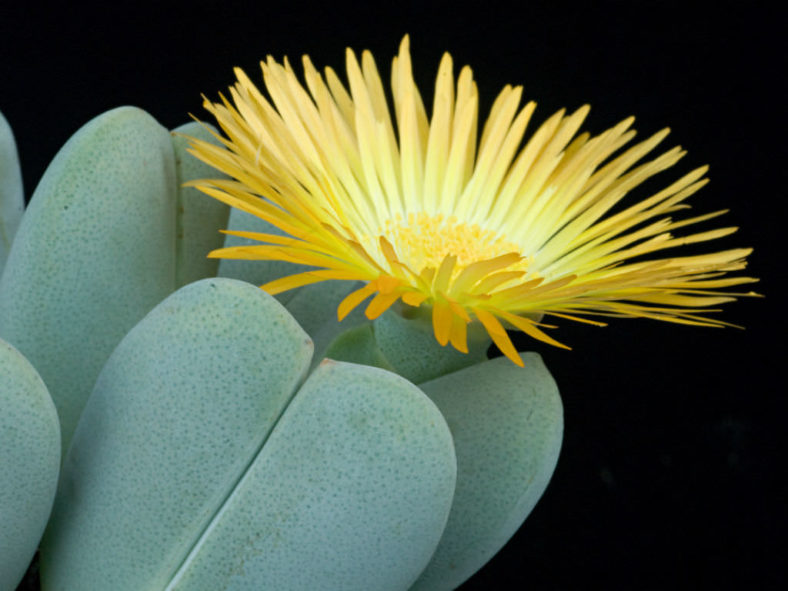Scientific Name
Cheiridopsis pillansii L.Bolus
Synonym(s)
Cheiridopsis brachystigma, Cheiridopsis crassa, Cheiridopsis gibbosa, Cheiridopsis pillansii var. pillansii
Scientific Classification
Family: Aizoaceae
Subfamily: Ruschioideae
Tribe: Ruschieae
Genus: Cheiridopsis
Etymology
The specific epithet "pillansii" (pronounced "pil-AN-see-eye") honors Neville Stuart Pillans (1884-1964), a South African botanist.
Origin
Cheiridopsis pillansii is native to South Africa. It occurs in quartz flats, often in spongy, saline soil or on low slopes in the Northern Cape province.
Description
Cheiridopsis pillansii is a succulent subshrub with very short stems, usually with one or two, sometimes three pairs of opposite, cushion-like, more or less erect, not gaping leaves. The old plants are richly clumped, and can grow up to 4 inches (10 cm) tall and 8 inches (20 cm) in diameter. The leaves are often puffy, fuzzy, pale greyish-white, and conspicuously spotted. They can measure up to 1.8 inches (4.5 cm) long. Eventually, the new leaf pair appears from the fissure between the old leaves. The fissure of the new leaves forms at about 90 degrees from the old fissure.
The flowers are solitary, sweetly scented, and appear in the fall. They can reach a diameter of up to 2.4 inches (6 cm). The petals vary in color from white to cream to pale rose or rich yellow. The fruits are 10- to 14-locular, nearly spherical capsules.

How to Grow and Care for Cheiridopsis pillansii
Hardiness: USDA hardiness zones 10a to 11b: from 30primarily.1°C) to 50°F (10°C).
Mesembs are mostly adapted to relatively predictable rainfall patterns rather than extreme drought and irregular rainfall. Total rainfall may be extremely low, but water is available at least seasonally or through fog and condensation. This leads to, or allows, plants that are not especially large and sometimes very small, and affects how they need to be treated in cultivation.
The basics of care are simple: free-draining soil, plenty of sun and ventilation, and regular light watering in the right season. Yet the difficulties are endless, trying to adapt to the Mesembs' adaptability and follow their growth habits in your particular conditions.
These plants require a loam-based compost with extra drainage material such as horticultural grit or perlite. They all like good light conditions and plenty of ventilation.
Some are relatively cold-hardy and can even survive mild winters outside. Most will survive temperatures down to the freezing point. Some Mesembs begin to grow in the fall as temperatures drop and days get shorter.
See more at How to Grow and Care for Mesembs.
Links
- Back to genus Cheiridopsis
- Succupedia: Browse succulents by Scientific Name, Common Name, Genus, Family, USDA Hardiness Zone, Origin, or cacti by Genus
Photo Gallery
Click on a photo to see a larger version.


